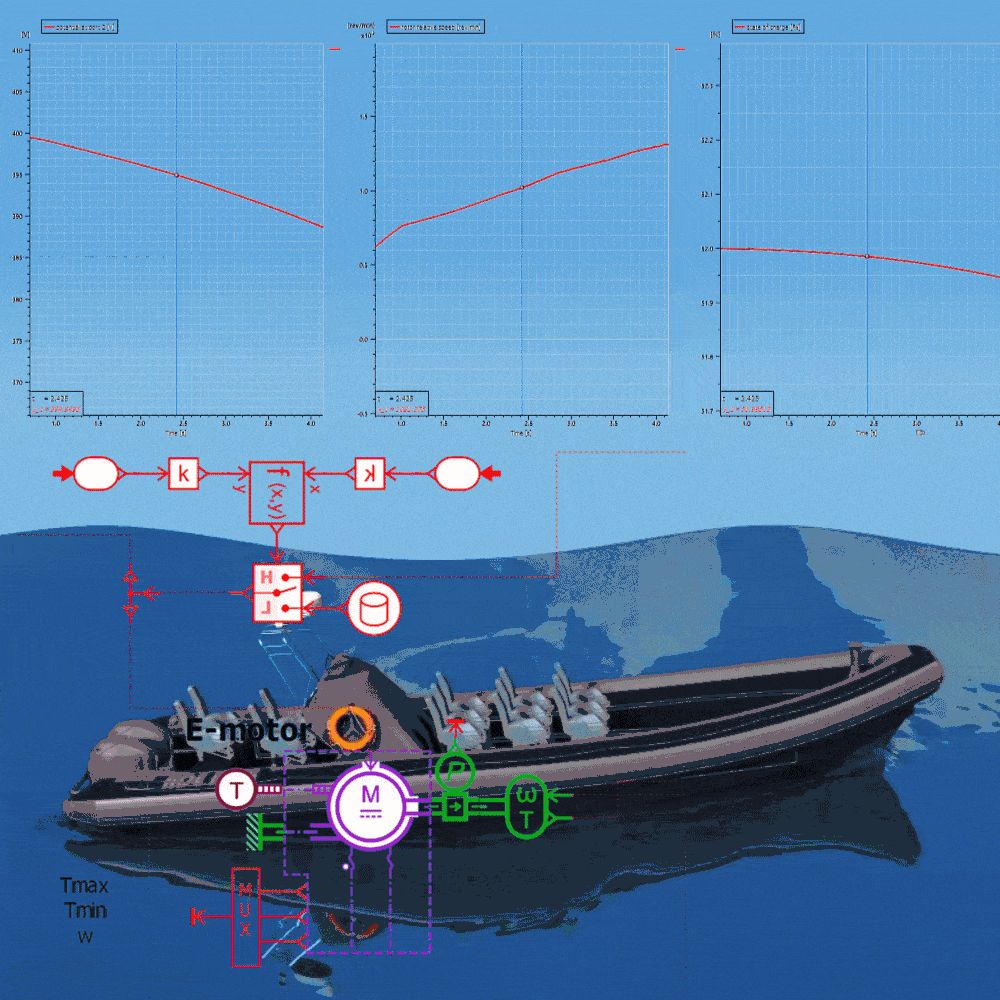In reference to the latest release of Simcenter Amesim version 2021.1, this week’s post will attempt to cover and highlight a couple of the improvements recently made in Simcenter Amesim.
Advancements have been made to both platform tools and individual libraries, and new tools like Simcenter Amesim’s ROM Builder for creating Reduced Order Models have been made available. ROM itself is an interesting concept and deserving a post of its own, but in the meantime will be mentioned here with a brief overview. In addition to these improvements, new demonstrator models have been made available for the various solutions, and to mention a few; a demo regarding the connection of an automated guided vehicle (AGV) with a programmable logic controller (PLC), ship dynamics during maneuvering or dynamic positioning, and a modelling approach for dynamic PEM Fuel Cell stacks.
Simcenter Amesim’s ROM Builder can be classified as a general-purpose tool for creating and deploying Reduced Order Models. At first glance the name might seem somewhat intimidating, but essentially it is a tool used for creating mathematical representations of a dataset with the purpose of estimating relationships between inputs and outputs. This is done by incorporating several different techniques and the data could come from sources like simulation or physical testing.
In one of its simplest forms, a ROM could be a linear regression of a dataset, i.e. a linear trendline using Excel terminology. The models could also range up to more advanced cases capturing dynamic nonlinear system behavior of higher complexity by using different types of neural network architectural choices, e.g. feed forward layers to capture static interaction followed by a recurrent neural network enabling dynamic behavior.

The mathematics and purpose behind these approaches are by no means anything new. What is new with Simcenter Amesim’s ROM Builder, however, is the ease with which these models can be deployed, exported, or incorporated into a simulation process without the need to venture outside the Simcenter Amesim environment. In the unlikely case you find yourself having some spare time, the concept above is well worth looking into and to consider how it could be used in conjunction with your current practice.
Embedded CFD in Simcenter Amesim aims to cover a middle ground between one-dimensional and traditional three-dimensional CFD, by integrating features from Simcenter STAR-CCM+ into Simcenter Amesim. The approach brings a more detailed air flow representation to cabin and underhood simulation, which may be very useful at early design stages where refined CAD geometry is scarce and when overall system performance is to be considered. In version 2021.1, the cabin capabilities have also been extended to include surface to surface radiation, batch options for geometry parameterization and physics settings, and outlet boundaries are given as an option for air recirculation modelling and strategy.
Worth mentioning is that the tool is tailored for a specific purpose, and thereby does not offer the same possibility for customization as would have been possible if both Simcenter Amesim and Simcenter STAR-CCM+ had been connected directly following the co-simulation methodology. Instead, the benefit of leveraging a simplified and parametric geometry, with a significant reduction in cell number compared to traditional CFD, is related to simulation robustness, reduced simulation time, and perhaps even a more comprehensive and exploratory design phase. The solver logic is designed to allow for long transient runs and launches Simcenter STAR-CCM+ in batch mode during every step of the coupling process, aiming to minimize the impact on either simulation time or accuracy. Simply stated, a compromise between two fields.

Fuel Cells and fuel cell systems is another topic which has received some attention in this, and previous versions of Simcenter Amesim, and is in fact a very multidisciplinary subject incorporating several different components which interact, such as the stack, cooling auxiliaries, air and hydrogen supply systems, electric conversion, and humidification devices. This in combination with the different types of physics involved, e.g. electricity, heat transfer, fluid dynamics, electrochemistry, makes it a matter not lending itself to study in a straightforward manner. Moreover, to gain competitive advantage major design and architectural choices must be carefully examined. An example of this could potentially involve adding an energy storage unit to a fuel cell system, thereby allowing for steady-state operation with higher efficiency. These are deliberations where trade-offs are a natural part of the scene, and where a system level approach really comes in to its own.
The fuel cell components library in Simcenter Amesim provides a means to better understand and investigate complex interactions occurring within and around a fuel cell system, as exemplified above. The library aims to facilitate the need for quick deployment by providing users with a set of pre-modelled components focused on current fuel cell technologies, primarily Proton Exchange Membrane (PEM) and Solid Oxide (SO). Depending on the level of modelling required, stack submodels based on electrochemical equations as the Butler-Volmer equation could be used to predict a cell’s dynamic performance by defining properties associated with for example cell geometry, cathode/anode voltage drop, membrane characteristics, and so on. While such detail could be desirable in some cases, typically this kind of modelling approach requires a large set of parameter values which could be difficult to identify, and due to this reason models based on a polarization curve are also provided.
In the latest release of Simcenter Amesim, a new multidimensional map-based PEMFC stack submodel has been included which allows for the calculation of stack voltage according to stack inlet conditions at the cathode and the anode sides. The calculation is based on a polarization curve, or rather a multivariable table depending on the relationship of up to 9 variables (stack current density [mA/cm2], temperatures [°C], Inlet pressures [PaA], cathode and anode relative humidity [%], O2 and H2 stoichiometry [-]).
Although new features and functionality are continuously added, Simcenter Amesim allows for a great deal of flexibility when it comes to customization, and it is thereby possible to model your own fuel cell architectures. This is done by arranging a collection of more generic components from existing physics libraries, e.g. the electrochemistry library. Furthermore, you may alter existing components to fit your needs or implement user code directly into a component, thereby making it possible to model other fuel cell types or add new functionality of your own, but of course, with the added caveat being that you have to do some of the legwork yourself.

Hopefully you found this post worth a look through, and if you have any questions or comments related to the topic, or to simulation in general, please feel free to reach out to us by emailing support@volupe.com.
Author
Fabian Hasselby, M.sc.
+46733661021
support@volupe.com





